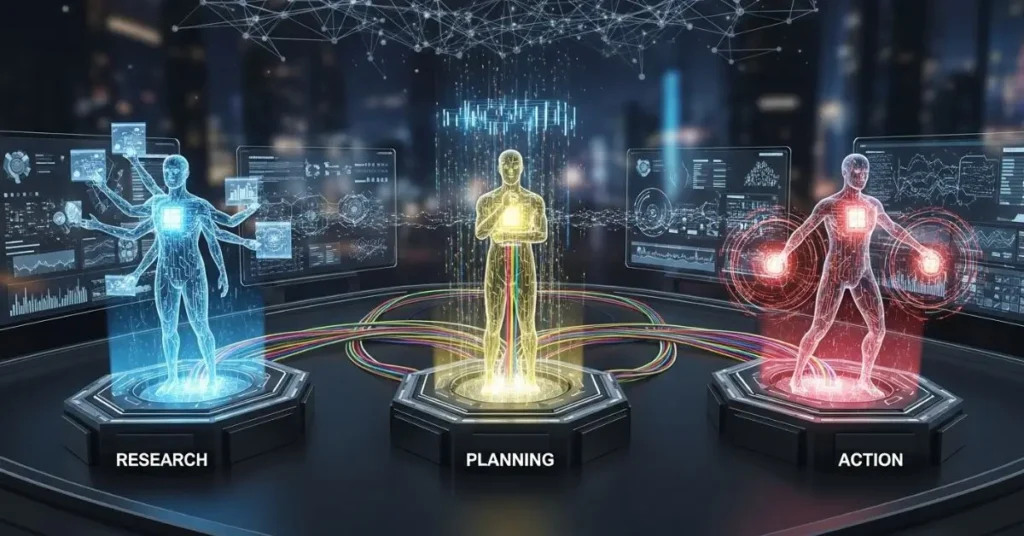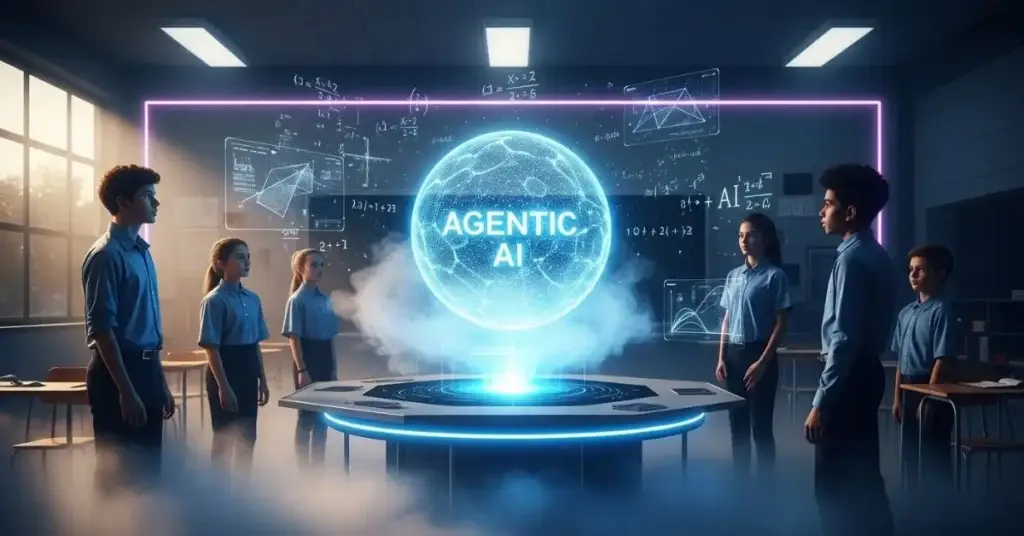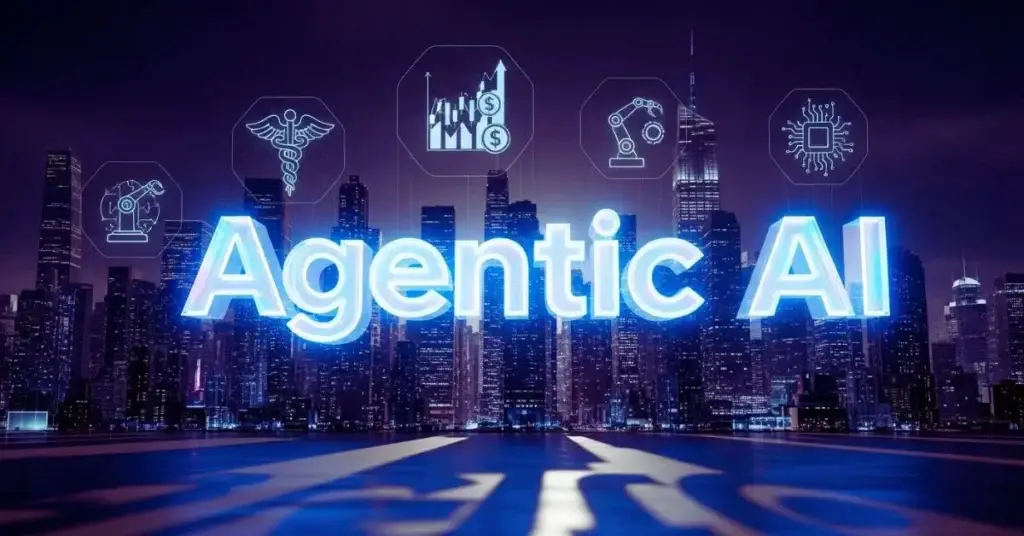
Introductions
Between 2026 and 2030, the world will experience a massive paradigm shift in AI, not through bigger models, but through Agentic AI: Intelligent systems capable of reasoning, acting, and collaborating autonomously. These agents won’t just assist humans, they’ll become partners in innovation, research, and enterprise productivity.
From autonomous data analysts to AI-driven product designers, Agentic AI represents the evolution from “predictive” to “proactive” intelligence. As we enter this transformative decade, let’s explore what’s shaping the future of this technology and how it will redefine industries, economies, and human collaboration.
What is Agentic AI?(Quick Summary)
Agentic AI refers to AI systems capable of independent decision-making, task execution, and collaboration without constant human intervention. Unlike traditional AI models that require predefined commands. Agentic systems can plan, learn, and self-correct based on feedback loops and contextual data.
Example:
- Traditional AI: Predicts sales trends when prompted.
- Agentic AI: Identifies declining sales, runs analysis, drafts a new strategy, and implements automated outreach all autonomously.
To understand how Agentic AI evolved beyond assistant-style systems, read our detailed comparison of Agentic AI vs Copilot AI models.
Key Trends in Agentic AI (2026–2030)
| Trend | Description | Impact by 2030 |
|---|---|---|
| 1. Multi-Agent Collaboration Networks | Governments are creating policies for agent responsibility and explainability. | 70% of enterprise workflows will include autonomous agent collaboration. |
| 2. AI-Native Workforce Integration | Agentic systems acting as virtual employees, writing reports, analysing data, and managing communication. | Expected $5 trillion in global productivity gains. |
| 3. Cognitive & Emotional AI Agents | Development of emotionally intelligent agents for customer service, education, and therapy. | Major shift in human-AI interaction quality. |
| 4. Regulation & AI Ethics Frameworks | Governments creating policies for agent responsibility and explainability. | Transparent AI ecosystems by 2029. |
| 5. AI Agents in Robotics & IoT | Agentic systems acting as virtual employees — writing reports, analysing data, and managing communication. | Multiple AI agents are working together on complex tasks like research, logistics, and strategy planning. |
1. The Core Architecture: How Agentic AI Works

At the heart of this transformation lies a combination of LLMs (Large Language Models) and autonomous frameworks such as LangGraph, AutoGen, CrewAI, and BabyAGI.
These frameworks introduce three new capabilities:
- Memory: AI agents retain knowledge across tasks.
- Reasoning: Agents learn to solve new, unseen challenges.
- Coordination: Multiple agents work together to achieve goals.
Example Workflow
| Agent Type | Function | Outcome |
|---|---|---|
| Research Agent | Finds relevant data & studies | Contextual accuracy |
| Planning Agent | Designs step-by-step execution | Autonomous workflow |
| Action Agent | Executes tasks & monitors results | Continuous learning |
This system allows companies to create self-operating AI pipelines, reducing human workload and accelerating decision-making by 80–90%.
2. Enterprise Adoption: The Rise of the AI Workforce
Between 2026 and 2030, enterprise AI adoption will move from automation to autonomy. Corporations are already integrating agentic automation platforms. AI systems that independently handle workflow management, marketing, HR, and customer engagement.
Real-World Use Cases
- AI Sales Agents: Identify leads, write proposals, and manage outreach.
- Finance Agents: Track transactions, detect fraud, and manage investments.
- HR Agents: Conduct interviews, schedule meetings, and analyse feedback trends.
- Operations Agents: Monitor logistics, predict failures, and reorder supplies.
By 2030, over 65% of Fortune 500 companies will deploy Agentic AI as part of their core operations.
The foundations for this shift were already laid by Agentic AI adoption in the USA 2025, where companies began scaling autonomous agents across business functions.
3. Multi-Agent Collaboration: Beyond Chatbots
By 2027, single-agent systems will evolve into multi-agent ecosystems, where networks of intelligent agents coordinate like human teams.
These ecosystems will feature:
- Specialised Roles: Research agents, execution agents, and evaluation agents.
- Continuous Learning Loops: Agents improving with each iteration.
- Human Oversight Dashboards: Real-time visibility for managers.
Example:
A publishing company could deploy 10 connected AI agents: one writes drafts, another edits tone, a third handles SEO, and another distributes content. This model represents the next phase of automation intelligence with intent.
4. Emotional & Cognitive Agents (2028–2030)
As LLMs mature, the next generation of Agentic AI will develop cognitive and emotional intelligence.
Instead of cold, robotic responses, future agents will understand tone, empathy, and social context.
Examples of Emotional Agents:
- Healthcare: AI therapists detecting mood shifts.
- Education: Adaptive learning tutors analysing frustration levels.
- Customer Service: Emotionally aware support bots resolving conflicts empathetically.
These agents will redefine how we interact with technology, shifting from task-driven to relationship-driven AI.
In fact, Agentic AI in education (USA & Canada) is already transforming learning through emotionally intelligent tutoring systems and adaptive classrooms
5. Agentic AI Meets Robotics

Agentic AI isn’t just digital, it’s physical. Between 2028 and 2030, robotics integrated with agentic reasoning will become mainstream.
Use Cases:
- Manufacturing: Self-learning robotic arms adjusting operations in real time.
- Defense: Coordinated drone networks sharing data autonomously.
- Healthcare: Surgical robots are adapting procedures based on live feedback.
- Logistics: AI-driven fleets optimising delivery routes independently.
This integration will create autonomous ecosystems capable of real-world reasoning and problem-solving, combining perception, cognition, and physical action.
6. Regulatory & Ethical Frameworks
The rapid evolution of Agentic AI will force governments and corporations to adopt accountability frameworks for autonomous systems.
By 2030, expect global legislation that defines:
- How AI agents make decisions
- How transparency and explainability must be ensured
- How liability is assigned when AI acts independently
Emerging Regulatory Examples:
| Region | Framework/Initiative | Focus Area |
|---|---|---|
| USA | NIST AI Risk Management | Accountability & Transparency |
| Canada | Artificial Intelligence and Data Act (AIDA) | Ethics & Governance |
| EU | AI Act 2026 | Human oversight, fairness, bias prevention |
7. Economic & Investment Outlook
By 2030, the global Agentic AI economy is projected to exceed $10 trillion, fueled by enterprise adoption, robotics, and SaaS integration.
Investment Hotspots:
- Agentic Automation Startups (e.g., multi-agent workflow tools)
- AI-Orchestrated Robotics Firms
- Data Governance & Audit Platforms
Venture capital will flow toward startups building self-improving, domain-specific agents, healthcare advisors, finance copilots, and legal consultants. Investors prioritise Agentic AI tools that lower human dependency, increase interpretability, and scale autonomously.
8. Agentic AI + Humans: The Future of Collaboration
Contrary to fear narratives, experts predict humans will not be replaced, but repurposed.
Agentic AI will handle execution, while humans focus on creativity, ethics, and strategy.
Hybrid Work Model (2026–2030):
| Human Role | AI Role | Outcome |
|---|---|---|
| Creative Direction | Content & Data Generation | Accelerated innovation |
| Decision Oversight | Data-driven analysis | Reduced bias & risk |
| Strategy & Leadership | Execution & Reporting | Continuous optimization |
In short, the AI-human relationship will evolve into co-leadership, where each complements the other’s strengths.
9. Challenges and Risks Ahead
Despite massive potential, Agentic AI faces real obstacles:
- Over-Autonomy: Risk of misalignment with human values.
- Explainability Gap: Difficulty understanding why an AI took a specific action.
- Bias Amplification: Data-driven agents might inherit systemic bias.
- Regulatory Delays: Global laws often lag behind innovation speed.
Researchers are building “Human-in-the-Loop” feedback models to overcome these, ensuring transparency and ethical oversight remain central.
10. The Roadmap to 2030
| Year | Milestone | Impact |
|---|---|---|
| 2026 | Widespread adoption of multi-agent frameworks | AI teams become standard in enterprises |
| 2027 | Agentic AI tools integrated into SaaS ecosystems | SMEs adopt AI-driven automation |
| 2028 | Cognitive and emotional AI models mature | Emotional computing becomes mainstream |
| 2029 | Global regulations established | Safe and explainable AI systems |
| 2030 | Full agentic ecosystems operational | Full agentic ecosystems are operational |
11. Predictions from Leading AI Thinkers
- OpenAI: Predicts “modular autonomy” small specialized agents outperforming single large models.
- Anthropic: Focus on interpretability and moral alignment for autonomous systems.
- DeepMind: Working on “recursive reasoning” AI agents that can self-audit decisions.
- Microsoft Research: Investing in human-AI collaborative frameworks.
These advancements signal that by 2030, Agentic AI won’t just support humanity, it will co-create with it.
Conclusion
The Future of Agentic AI (2026–2030) is not just about smarter machines. It’s about adaptive, goal-oriented intelligence that transforms work, creativity, and decision-making. From enterprise automation to robotics and ethics, Agentic AI will shape how we define autonomy, trust, and intelligence.
Businesses that invest early in Agentic systems will gain a competitive edge, while those delaying adoption risk falling behind in the next technological revolution.
The future is the collaborative intelligence era, where human purpose meets machine agency.
FAQs about the future of Agentic AI
Q1. What is Agentic AI?
Answer: Agentic AI refers to self-governing systems capable of making independent decisions without direct human intervention.
Q2. How is Agentic AI different from traditional AI?
Answer: Traditional AI executes tasks; Agentic AI plans, executes, and optimizes outcomes autonomously.
Q3. Which industries will benefit most from Agentic AI by 2030?
Answer: Healthcare, finance, robotics, and manufacturing will see the biggest transformation.
Q4. Are Agentic AI systems safe?
Answer: With new accountability frameworks, Agentic AI is expected to become transparent and auditable by 2030.
Q5. Will Agentic AI replace human jobs?
Answer: It will augment rather than replace humans who will supervise AI ecosystems.
Q6. What are multi-agent systems in AI?
Answer: These are collaborative networks where multiple AI agents coordinate tasks and decisions autonomously.
Q7. What ethical challenges exist in Agentic AI?
Answer: Transparency, fairness, and accountability are key ethical concerns.
Q8. When will Agentic AI become mainstream?
Answer: Between 2027 and 2029, mainstream enterprise and consumer adoption will accelerate.


